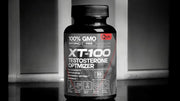Time is running out, our 10% OFF sale! Code: WELCOME10
May 22th, 2023
Lipids And
Diabetes Connection
Introduction
Explore the crucial role of lipids in the development and progression of diabetes. Learn about lipid dysregulation, insulin resistance, lipotoxicity, and how therapeutic strategies are targeting lipid management in diabetes care, all based on cutting-edge scientific research.
"Understanding the intricate dance between lipids and diabetes is not just a scientific endeavor, but a necessary step towards creating better therapeutic interventions and improving the lives of individuals with this chronic disease."
The Link between Lipids and Diabetes
Lipids, widely recognized as fats and cholesterol, play a pivotal role in our body, serving as energy stores and essential components of cell membranes. In recent years, the relationship between lipid metabolism and the onset of diabetes has become a topic of keen interest in the medical research community. This article explores the association between lipids and diabetes, drawing from recent scientific literature.
Impaired Lipid Metabolism in Diabetes:
Lipid abnormalities are frequently observed in diabetic patients. Specifically, elevated levels of triglycerides, low-density lipoproteins (LDL), and reduced levels of high-density lipoproteins (HDL) are common in people with diabetes. This dyslipidemia can significantly increase the risk of cardiovascular disease, a leading cause of mortality in diabetic individuals (Taskinen, Borén, 2015).
Hyperglycemia (high blood sugar levels), characteristic of diabetes, particularly type 2 diabetes, contributes to this dyslipidemia. Hyperglycemia enhances the production of free fatty acids and subsequently the production of triglycerides and LDL cholesterol, worsening the lipid profile (Taskinen, Borén, 2015).
Role of Lipids in Insulin Resistance:
Research has found a strong link between abnormal lipid levels and insulin resistance, a precursor to type 2 diabetes. Excess levels of specific lipids, particularly saturated fatty acids, can induce a state of insulin resistance by interfering with insulin signaling pathways (Saponaro, Gaggini, Gastaldelli, 2015). Moreover, ectopic fat deposition (fat stored in unusual places like liver, muscles, or pancreas) is associated with insulin resistance, thereby contributing to the development of diabetes.
Lipotoxicity:
Lipotoxicity, a state resulting from the excessive accumulation of lipids in non-adipose tissues, has also been linked to the development of diabetes. This accumulation can lead to cellular dysfunction and death, often termed lipoapoptosis. It also contributes to impaired insulin secretion by the pancreatic β-cells and has been strongly associated with the onset of type 2 diabetes (Schaffer, 2003).
Therapeutic Approaches:
Given the significant role of lipids in diabetes pathophysiology, lipid management has become a critical aspect of diabetes care. Therapies aimed at reducing LDL cholesterol and triglycerides and increasing HDL cholesterol, such as statins and fibrates, have proven effective in managing the risk of cardiovascular disease in diabetic patients (Chapman et al., 2011).
Inhibitors of the sodium-glucose cotransporter 2 (SGLT2 inhibitors) not only lower glucose levels but also have beneficial effects on weight and lipid metabolism (Zinman et al., 2015). Furthermore, lifestyle interventions targeting weight loss, physical activity, and a healthy diet have been effective in improving lipid profiles and managing diabetes.
Conclusion
In summary, the nexus between lipids and diabetes is a complex interplay that significantly impacts the progression and management of the disease. There's a clear necessity for continued research to better understand this relationship and develop more effective therapeutic approaches to improve the lives of individuals with diabetes.
References
-
Taskinen, M. R., & Borén, J. (2015). New insights into the pathophysiology of dyslipidemia in type 2 diabetes. Atherosclerosis, 239(2), 483-495.
-
Saponaro, C., Gaggini, M., & Gastaldelli, A. (2015). Nonalcoholic fatty liver disease and type 2 diabetes: common pathophysiologic mechanisms. Current diabetes reports, 15(6), 34.
-
Schaffer, J. E. (2003). Lipotoxicity: when tissues overeat. Current opinion in lipidology, 14(3), 281-287.
-
Chapman, M. J., Ginsberg, H. N., Amarenco, P., Andreotti, F., Borén, J., Catapano, A. L., ... & Wiklund, O. (2011). Triglyceride-rich lipoproteins and high-density lipoprotein cholesterol in patients at high risk of cardiovascular disease: evidence and guidance for management. European heart journal, 32(11), 1345-1361.
-
Zinman, B., Wanner, C., Lachin, J. M., Fitchett, D., Bluhmki, E., Hantel, S., ... & Mattheus, M. (2015). Empagliflozin, Cardiovascular Outcomes, and Mortality in Type 2 Diabetes. The New England journal of medicine, 373(22), 2117-2128.
Written by Rob Shockey
Looking for an all-natural way to support your body? Ascent Nutrition Organic Sea Moss may be just what you need! Our Sea Moss is synergistically combined with Organic Bladderwrack and Organic Burdock root to give an abundance of vitamins, minerals, amino acids, and fatty acids. Plus, we add BioPerine® to ensure optimal absorption of the many nutrients within. Whether you’re looking to boost your overall health or fight off infection, our Organic Sea Moss can help!
- Promotes a Healthy Immune System*
- Assists In Healthy Detoxification*
- Supports Cardiovascular Health*
- Encourages Energy Production and Hormonal Function*
- Promotes Healthy-Looking Hair, Skin, and Nails*
- Contains Iodine - An Essential Nutrient*







